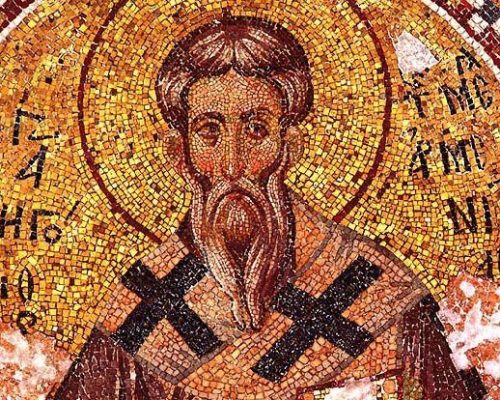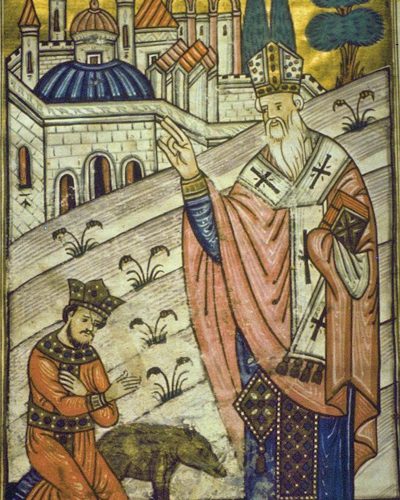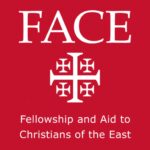Feast of St Gregory the Illuminator

Feast of St Gregory the Illuminator
Feast in the Extraordinary Form of the Catholic Church: 1st October
READING
From The Life of St. Gregory the Illuminator by Agathangelos
Throughout the whole land of Armenia, from end to end, Gregory extended the labour of preaching the Gospel.
All the time of his life, summer and winter, day and night, intrepidly and without hesitation in his course of preaching the good word, before the king and princes of all the heathen, without let or hindrance, he bore the name of Jesus the Saviour of all, and he furnished every soul with divine vesture and spiritual arms.
He afforded salvation to many prisoners and captives and people oppressed by tyrants, freeing them by the awesome power of Christ’s glory….And to many in mourning or disheartened, through his consoling teaching he gave the expectation of hope in the appearance of the glory of our great God and Saviour of all, Jesus Christ. And he turned everyone to the state of true piety….He himself at frequent intervals went out to deserted mountains where he made himself an example. He took various of the pupils from each monastery and went to live in the mountains in solitude; in grottoes and caverns they made herbs their daily food.
Agathangelos, History of the Armenians, chap. 13, trans. R. W. Thomson (Albany: State University of New York Press, 1976), 377-85.
REFLECTION
by Father Robin Gibbons, Chaplain to Fellowship and Aid to the Christians of the East (FACE)
In previous ages many countries in Europe and the Middle East based their growth and subsequent expansion from the religious division of time, before and after the conversion of their peoples to Christianity, or as in some Middle Eastern States the later change to Islam. The force and power of a religious movement and the key people involved in it are somehow part of the great narrative of meaning for our history. In the Christian tradition we hold the memory of those we name as ‘holy ones’ (the saints) as important for our understanding of Church and community; in other words, we honour and keep remembering in the Liturgy and on their feast days these friends of God, who are not only part of our cultural history, but also present, and with us, in the community of heaven; which means, in Christian belief, that they are alive in the Risen Christ. Their witness and example, which we still celebrate in our own faith communities, continue to inspire us.
For any church, the early founders, often called ‘equal to the Apostles’ because they join us to that Apostolic Community of the original Church, are part of that beautiful theology of the living Temple built up by the Holy Spirit on Christ, who is the foundation or cornerstone, with our apostolic saints as the first layer of building blocks. This also ties in with the wonderful Pauline image of the Body of Christ of which we are all members, each having a different but important part in the ministry of building up the community of Christ in the world. For us this is also a reminder that although we categorise the different church structures of East and West in different ways, under Christ our head we are one Church, though as yet imperfectly formed together.
When, as on this feast of Gregory, a community is called back to the sources of its Christian tradition, we discover new insights, particularly in that light and gift of the Holy Spirit. Though we might understand the warning about historical interpretation in the famous words of L. P. Hartley in The Go-Between, “The past is a foreign country; they do things differently there”, our own Christian theology, particularly that connected to the celebration of the Liturgy, helps us to understand that the past is also brought alive, especially when we remember before God all that has taken place in Christ. For in these moments we are part of the great cloud of witnesses in God’s good time, kairos, not in our chronological time.
In commemorating the founder of a church or the first missionary to evangelise a people, we not only acknowledge actual history, but in a real way we bring the memory of these saints and their goodness and deeds before us, and in intercession we are drawn close to them. So, for Armenia, it is Saint Gregory the Illuminator who, as first Catholicos, represents that link with the apostolic Church, the community of the disciples of `Christ which he built up, especially in his consecration of bishops to serve the nascent church, in his organisation of the Armenian Church, and the evangelisation of the Armenian peoples. His title ‘the Enlightener’ is a constant reminder that through individuals who give their life to the ministry of Christ, that light of Christ continues to shine as a light for all nations.
PRAYER
Almighty God, whose will it is to be glorified in your saints, and who raised up your servant Gregory the Illuminator to be a light in the world and to preach the Gospel to the people of Armenia: Shine, we pray, in our hearts, that we also in our generation may show forth your praise, who called us out of darkness into your marvellous light; through Jesus Christ our Lord, who lives and reigns with you and the Holy Spirit, one God, now and for ever. Amen.
From the Byzantine tradition :
Apolytikion of Gregory the Illuminator
Fourth Tone
As a sharer of the ways and a successor to the throne of the Apostles, O inspired of God, thou foundest discipline to be a means of ascent to divine vision. Wherefore, having rightly divided the word of truth, thou didst also contest for the Faith even unto blood, O Hieromartyr Gregory. Intercede with Christ our God that our souls be saved.
Kontakion of Gregory the Illuminator
Fourth Tone
Let us the faithful today all acclaim with divine songs and hymns the renowned hierarch Gregory as an athlete for truth’s sake, as a shepherd and teacher, a universal luminary bright with splendour; for he intercedeth with Christ that we be saved.
St Gregory, the Illuminator
Holy Hieromartyr Gregory, Bishop of Greater Armenia, Equal of the Apostles and Enlightener of Armenia.
Gregory was born in 257 CE, in Vagarshapat (now Ejmiadzin), in Armenia and died in 332 CE, Armenia; his feast day is kept on September 30.
According to tradition, he is regarded as the 4th-century apostle of Christianity in Armenia. The Armenian Church regards him as the first Catholicos of All Armenians. Gregory was consecrated bishop in 301 CE by Cappadocian bishops in Caesarea, in order to establish the episcopacy of the Armenian nation through the legitimacy of Apostolic succession. Gregory organized the hierarchy of the Armenian Church according to the principles of the Armenian state administrative system, ordaining a bishop for every principality in Armenia. In ecclesial tradition these bishops were under the jurisdiction of the Supreme Bishop of Armenia, later known as the Catholicos of All Armenians. Gregory is called “the Illuminator” or “the Enlightener” because he brought the light of the gospel to the peoples of Armenia.
Later explanation of his life
Various legends cloud the actual details of Gregory’s life. He is said to have been the son of a Parthian who assassinated the Persian King Khrosrov I, so for safety the infant Gregory was taken to Caesarea in Cappadocia, where he was baptized and brought up. He later married and had two sons, then returned to Armenia about 280 CE, converting the King, Tiridates (Tradt) III. About the year 300 CE, he was consecrated bishop at Caesarea then spent the rest of his life preaching and organizing the emerging church in Armenia itself. Shortly before his death, he appointed his son Aristages to be chief bishop (Catholikos) of the Armenian Church in place of himself, and withdrew into solitude.
We need to note that thanks to Gregory, Armenia was the first country to become an officially Christian nation, which set a precedent for the later adoption of Christianity by the Roman Emperor Constantine.
Relics
The femur and manacles of St Gregory are enshrined at Saint Gregory the Illuminator Cathedral in Yerevan, having been previously kept in St Gregorio Armeno in Naples from the 8th century onwards, until they were returned by Pope John Paul II to Catholicos Karekin II. The Gregoriou Monastery on Mount Athos also claims to have the skull.

St Gregory the Illuminator
Patron Saint of Armenia
PLEASE SUPPORT OUR EMERGENCY AID PROJECTS IN ARMENIA
Together with the local Christian communities, we aim to bring lasting change to those regions through education, healthcare, pastoral support and community projects.
We strive to preserve the heritage of the Eastern Churches so that Eastern Christians remain a living testament to the roots, legitimacy and beneficence of the Christian presence in the Middle East.
www.facecharity.org/act-of-giving
Photo: A displaced family from Nagorno-Karabakh in Armenia

